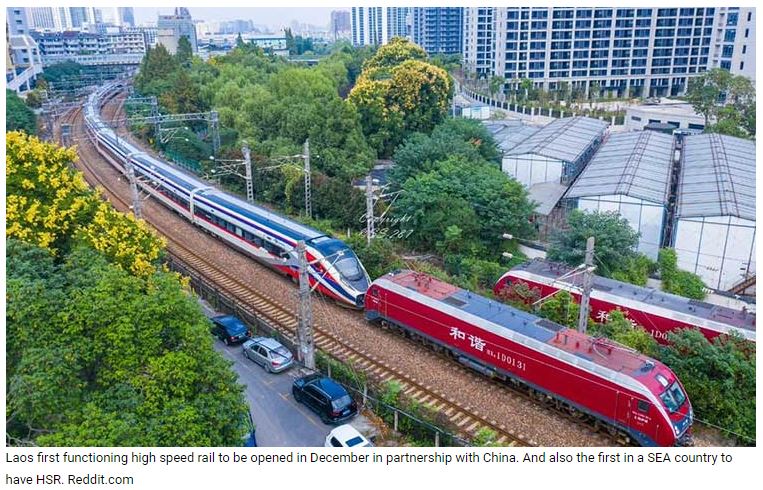Cambodia seeks $4 billion investments for its first high-speed railway
The railway, starting from the capital Phnom Penh to Poipet, a town bordering Thailand, covers a distance of 382 kilometers. Trains will run at a designed speed of 160 to 200 kilometers per hour, according to a statement sent to the Global Times by Chinese infrastructure giant China Road & Bridge Corp (CRBC) on Tuesday.
The Cambodia China Times, a local media outlet, reported on Tuesday that Cambodian Minister of Public Works and Transport Sun Chanthol revealed that the project is seeking investors. He said this during a meeting with Thailand’s ambassador to Cambodia Cherdkiat Atthakor.
The CRBC feasibility study has a plan for 33 stations, and the railway will pass over some 300 roads using bridges.
The estimated budget of $4 billion covers the construction of the railway, stations, and the purchase of high-speed trains.
The news came after Cambodian Prime Minister Hun Sen’s visit to China earlier in February.
In a joint statement issued by China and Cambodia on February 11, China pledged support for initial-stage work concerning Cambodia’s railway project, including planning, designing and the feasibility study. It was noted that both sides look forward to the early connection of Cambodia’s railway tracks with the China-Laos-Thailand railway.
A Chinese railway expert said that the railway will be likely the third leg of the Trans-Asian Railway (TAR), a century-old dream for countries in the region.
Sun Zhang, a railway expert with Shanghai Tongji University, told the Global Times on Tuesday that the railway could potentially provide a linkage between the central route (to Singapore) and the eastern route (via Vietnam) of the TAR.
The railway could give landlocked Laos, which is already a land-linked hub, access to sea ports in Cambodia as a booster of trade, Sun said.
The railway could eventually connect with Vietnam’s Ho Chi Minh City.
Laos completed its first high-speed railway in 2021 and the first-year performance showed encouraging results, demonstrating the potential of the TAR.
During the period, the 1,035-kilometer milestone mega connectivity project created 100,000 jobs, carried 11.2 million tons of cargo and served 8.5 million passengers.
It has also driven up Laos’ production of iron ore by 1.8 million tons, cassava flour by 2 million tons and rubber by 1 million tons, compared with a year earlier.
In Thailand, the construction of the second leg of the TAR is progressing with first-phase construction of the China-Thailand railway entering the fully fledged phase and connectivity projects being built at the Thailand-Laos border to expedite the transit of goods.
Amid US crackdowns, China is expanding trade with ASEAN countries, with the benefits of the newly minted Regional Comprehensive Economic Partnership (RCEP) mega trade deal and infrastructure projects are playing key roles, experts said.
The RCEP pact is set to lift regional GDP by 0.86 percent by 2035, a report by the Chinese Academy of International Trade and Economic Cooperation stated in November 2021.
“Like many projects in the region, the potential railway is a matter of political will, while technologically speaking, the condition is ripe,” Sun said. Global Times


 English
English




